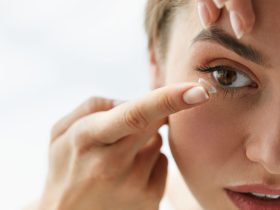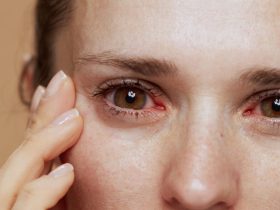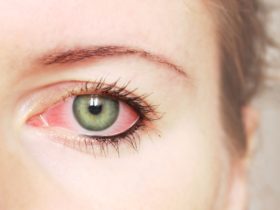Severe dry eyes can cause redness, irritation, and blurred vision. High-quality images can help in diagnosing the condition.
Severe dry eyes, medically known as keratoconjunctivitis sicca, can significantly impact daily life. The condition occurs when tears are insufficient or evaporate too quickly, leading to inflammation. Symptoms include a gritty sensation, burning, and discomfort. Causes range from aging and hormonal changes to environmental factors and prolonged screen use.
Proper diagnosis often requires a thorough examination, sometimes supported by detailed images. These images can reveal the extent of dryness and any underlying issues. Effective treatment can improve quality of life, including artificial tears, lifestyle changes, and medical interventions. Addressing severe dry eyes promptly can prevent complications and enhance overall eye health.
Introduction To Severe Dry Eyes
Severe dry eyes can cause great discomfort. This condition often leads to blurred vision, itching, and redness. Understanding the causes and risks helps in managing the condition better.
Common Causes
Several factors contribute to severe dry eyes. These include:
- Aging: Tear production decreases with age.
- Medications: Some drugs reduce tear production.
- Environmental factors: Wind, smoke, and dry climates can cause dry eyes.
- Screen time: Staring at screens reduces blinking, causing dryness.
- Health conditions: Diseases like diabetes and arthritis affect tear production.
Who Is At Risk
Some people are more prone to severe dry eyes. These groups include:
| Risk Group | Reason |
|---|---|
| Older Adults | Decreased tear production with age. |
| Women | Hormonal changes affect tear production. |
| Contact Lens Wearers | Contact lenses can dry out eyes. |
| Screen Users | Less frequent blinking causes dryness. |
| People with Health Conditions | Diseases like diabetes affect tear production. |
Visual Symptoms Of Severe Dry Eyes
Severe dry eyes can cause many visual symptoms that affect daily life. Recognizing these symptoms early can help in seeking timely treatment. Below, we discuss some common visual symptoms associated with severe dry eyes.
Redness And Irritation
One of the first signs of severe dry eyes is redness. The eyes may appear bloodshot or inflamed. This occurs due to the lack of moisture, causing the blood vessels to become more visible.
Irritation is another symptom that can cause discomfort. The eyes may feel gritty or as if there is a foreign object in them. This constant irritation can lead to rubbing, which further exacerbates the problem.
Blurred Vision
Severe dry eyes can also lead to blurred vision. The lack of adequate lubrication on the eye surface can distort vision. This can make it difficult to focus on objects clearly.
Blurred vision can be intermittent or constant. It often worsens after long periods of reading, watching screens, or driving. These activities strain the eyes, making the symptoms more pronounced.
| Symptom | Description |
|---|---|
| Redness | Bloodshot eyes due to visible blood vessels. |
| Irritation | Feeling of grittiness or foreign object in the eyes. |
| Blurred Vision | Inability to see objects clearly. |
- Redness: Visible blood vessels in the eyes.
- Irritation: Gritty feeling or discomfort.
- Blurred Vision: Difficulty focusing on objects.
Images Depicting Severe Dry Eyes
Severe dry eyes can cause discomfort and irritation. Seeing images helps understand the condition better. Below are images from clinical settings and patient submissions.
Clinical Images
Clinical images show severe dry eyes in a medical setting. Doctors use special tools to capture these images.
| Image | Description |
|---|---|
 |
Shows redness and inflammation. |
 |
Highlights the lack of tear film. |
Patient-submitted Images
Patient-submitted images give a personal view. They show real-world examples of severe dry eyes.
-

Shows dryness and irritation.
-

Displays redness and swollen eyelids.
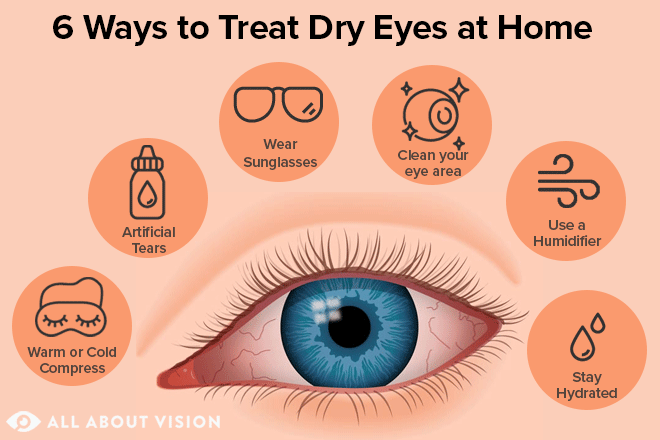
Credit: www.allaboutvision.com
Diagnostic Techniques
Diagnosing severe dry eyes involves several techniques. These tests help doctors understand the severity and cause. Proper diagnosis ensures effective treatment. Here are some common diagnostic techniques:
Eye Examination
Doctors perform a thorough eye examination to detect dry eyes. They use a slit-lamp microscope to inspect the eyes. This tool helps them see the eye’s surface in detail. The doctor looks for signs of dryness and inflammation. They also check for any damage to the cornea.
Tear Production Tests
Tear production tests measure how much tears your eyes produce. There are a few common methods:
- Schirmer Test: A small strip of paper is placed under the lower eyelid. The doctor measures how much tear the paper absorbs over a few minutes.
- Tear Breakup Time (TBUT): A special dye is added to the eyes. The doctor observes the time it takes for dry spots to appear.
- Osmolarity Test: This test measures the salt content in your tears. Higher salt levels indicate less tear production.
These tests help doctors understand tear production. They can then suggest appropriate treatments.
Non-prescription Treatments
Severe dry eyes can cause discomfort and vision problems. Treating this condition without a prescription can help many people find relief. Here are some effective non-prescription treatments.
Artificial Tears
Artificial tears are over-the-counter eye drops that provide moisture. They mimic natural tears. These drops can be used multiple times a day.
Choose preservative-free drops if you have allergies. They are gentler on the eyes. Artificial tears come in different viscosities. Thicker drops last longer but may blur vision.
Using artificial tears regularly can prevent eye irritation. They are a simple and effective solution.
Warm Compresses
Warm compresses can help relieve dry eye symptoms. Heat helps to open the oil glands in the eyelids.
To make a warm compress, soak a clean cloth in warm water. Place the cloth over your closed eyes for 5-10 minutes. Repeat this process twice a day.
Using warm compresses can improve tear quality. This is an easy and cost-effective treatment.
| Non-Prescription Treatment | Benefits |
|---|---|
| Artificial Tears | Provides moisture, mimics natural tears |
| Warm Compresses | Opens oil glands, improves tear quality |
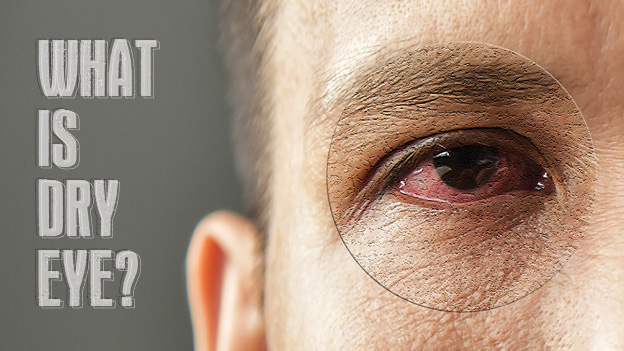
Credit: www.bayouvision.com
Prescription Medications
Prescription medications can provide significant relief for those suffering from severe dry eyes. These medications are often more potent than over-the-counter options and are tailored to address specific causes and symptoms of dry eyes.
Anti-inflammatory Drops
Anti-inflammatory drops are commonly prescribed for severe dry eyes. These drops reduce inflammation and help your eyes produce more tears.
- Restasis: This drop increases tear production and reduces inflammation.
- Xiidra: This drop targets inflammation and improves eye comfort.
- Lotemax: This drop is a steroid that reduces eye inflammation.
Oral Medications
Oral medications can also help manage severe dry eyes. These medications work from within the body to address underlying issues.
| Medication | Purpose |
|---|---|
| Doxycycline | Reduces inflammation and improves tear production. |
| Tetracycline | Helps manage rosacea-related dry eyes. |
| Omega-3 Supplements | Improves tear quality and reduces inflammation. |
These prescription options provide targeted relief for severe dry eyes. Consult with your eye doctor to determine the best course of treatment.
Advanced Treatment Options
When it comes to dealing with severe dry eyes, conventional methods might not be enough. Advanced treatment options can offer relief for those suffering from this condition. Let’s explore some effective solutions.
Punctal Plugs
Punctal plugs are tiny devices inserted into the tear ducts. They help retain natural tears and improve eye moisture. This simple procedure is usually quick and painless.
- Made of silicone or collagen
- Temporary or permanent options available
- Non-invasive and reversible
| Type | Material | Duration |
|---|---|---|
| Temporary | Collagen | Several days to months |
| Permanent | Silicone | Indefinite |
Surgical Interventions
For more severe cases, surgical interventions might be necessary. These procedures can provide long-term relief.
- Amniotic Membrane Transplant: Uses a natural membrane to heal the eye surface.
- Tarsorrhaphy: Partially sews the eyelids together to reduce tear evaporation.
Surgical options can be more invasive but often provide lasting results. They are typically considered after other treatments have failed.
Lifestyle And Home Remedies
Dealing with severe dry eyes can be challenging. Adopting certain lifestyle and home remedies can significantly alleviate discomfort. Below are practical tips and adjustments you can make at home.
Hydration Tips
Staying hydrated is crucial for eye health. Here are some tips:
- Drink at least 8 glasses of water daily.
- Include water-rich foods in your diet.
- Avoid excessive caffeine and alcohol.
- Use a humidifier to maintain indoor moisture.
Environmental Adjustments
Making changes to your environment can help reduce dry eye symptoms. Consider the following:
- Reduce screen time and take frequent breaks.
- Adjust your computer screen to below eye level.
- Wear sunglasses outdoors to protect from wind and sun.
- Avoid smoke and other irritants.
Implementing these simple changes can make a big difference in managing severe dry eyes. By maintaining good hydration and optimizing your environment, you can experience significant relief.
Preventive Measures
Preventing severe dry eyes is important. Simple steps can help avoid discomfort. These measures protect your eyes and keep them healthy.
Regular Eye Check-ups
Regular eye check-ups are essential. Visit an eye doctor at least once a year. They can identify early signs of dry eyes. Early detection helps in effective management. An eye doctor can suggest the best treatment options. Do not skip these important visits.
Protective Eyewear
Protective eyewear is crucial in preventing dry eyes. Sunglasses shield your eyes from harmful UV rays. Use wrap-around glasses for better protection. If you work in dusty environments, wear safety goggles. These steps reduce the risk of eye irritation. Always choose high-quality protective eyewear.
Here is a quick summary of preventive measures:
- Regular Eye Check-ups: Visit an eye doctor annually.
- Protective Eyewear: Use sunglasses and safety goggles.
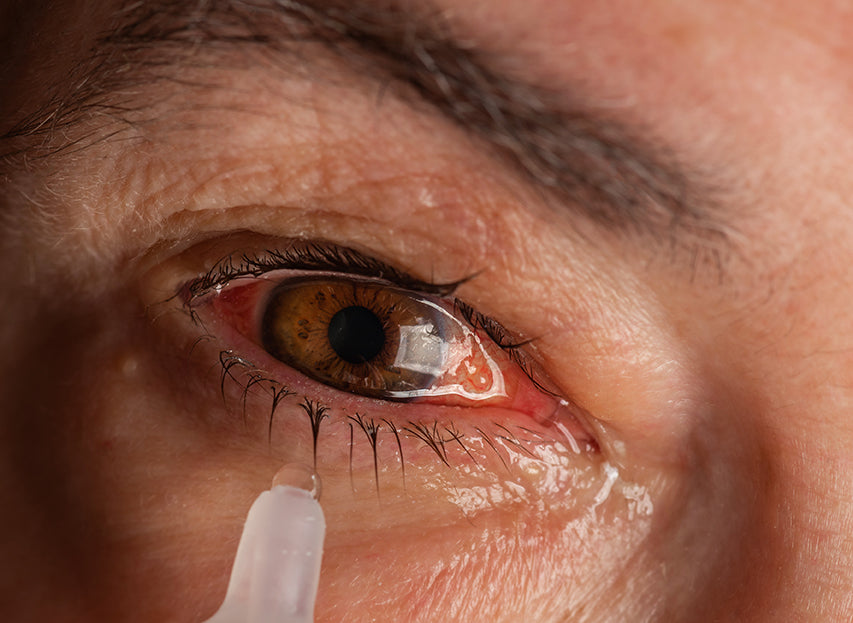
Credit: www.specsoptometry.com
Frequently Asked Questions
What Are The Symptoms Of Severe Dry Eyes?
Severe dry eyes cause redness, itching, burning, and blurred vision. It can also lead to light sensitivity.
How Is Severe Dry Eyes Diagnosed?
An eye doctor performs tests to measure tear production and quality. They also examine the eye surface.
Can Severe Dry Eyes Cause Permanent Damage?
Yes, severe dry eyes can damage the cornea and lead to vision loss if untreated. Early treatment is crucial.
What Treatments Are Available For Severe Dry Eyes?
Treatments include artificial tears, prescription eye drops, and lifestyle changes. In severe cases, surgery might be required.
How Can I Prevent Severe Dry Eyes?
Avoid dry environments, take breaks from screens, and stay hydrated. Use a humidifier and wear protective eyewear.
Conclusion
Dry eyes can cause significant discomfort and impact daily life. Recognizing the symptoms is crucial for timely treatment. Regular eye check-ups and proper hydration can help. If symptoms persist, consult an eye specialist. For more information, explore our detailed images and resources on severe dry eyes.
Stay proactive about eye health.






